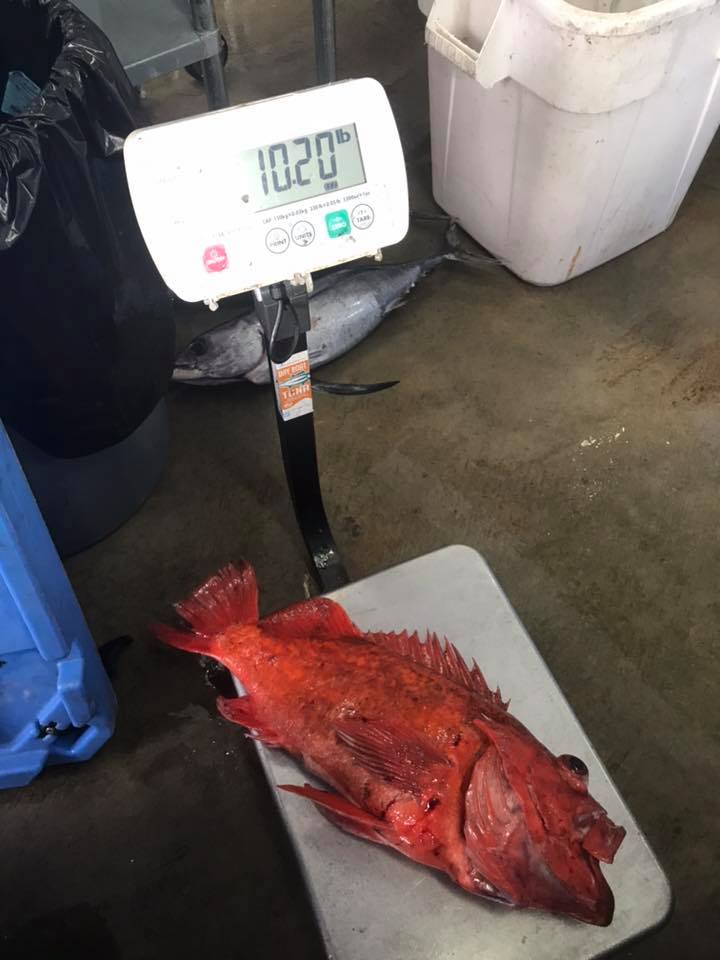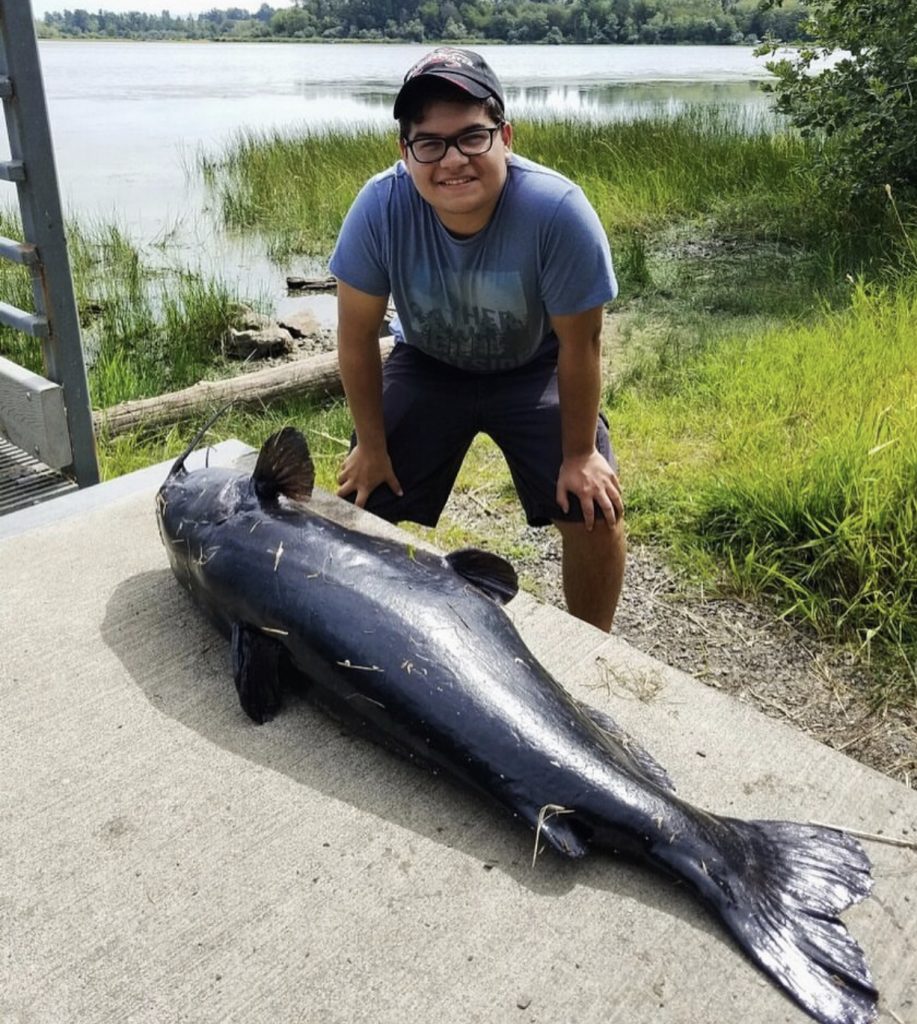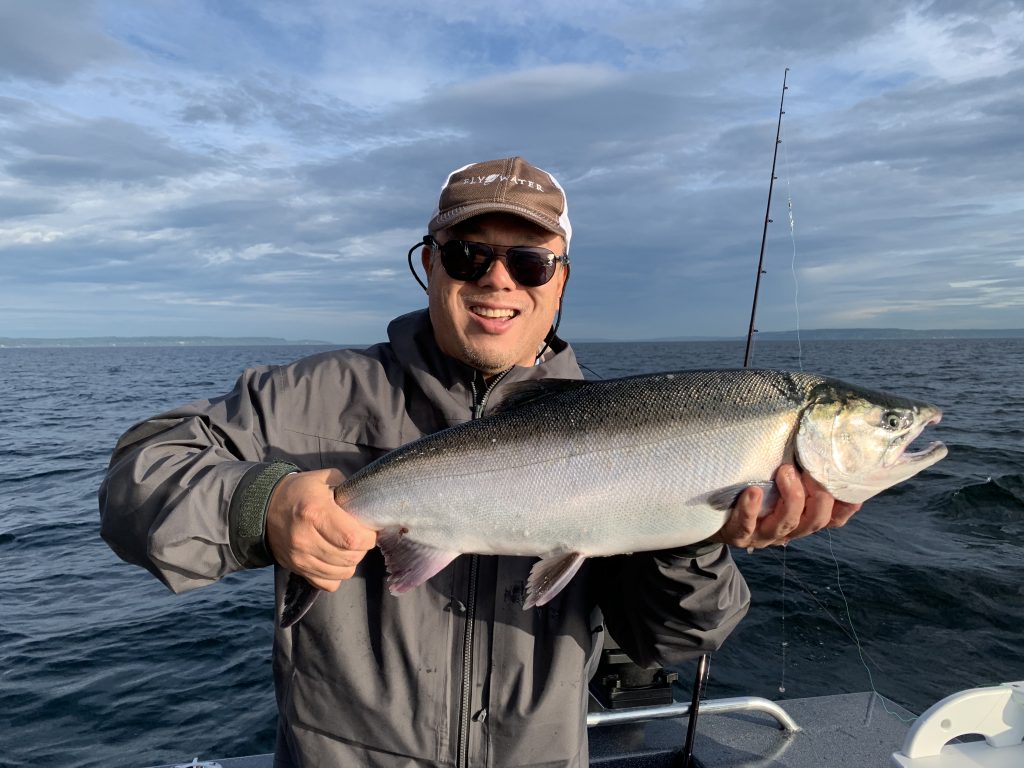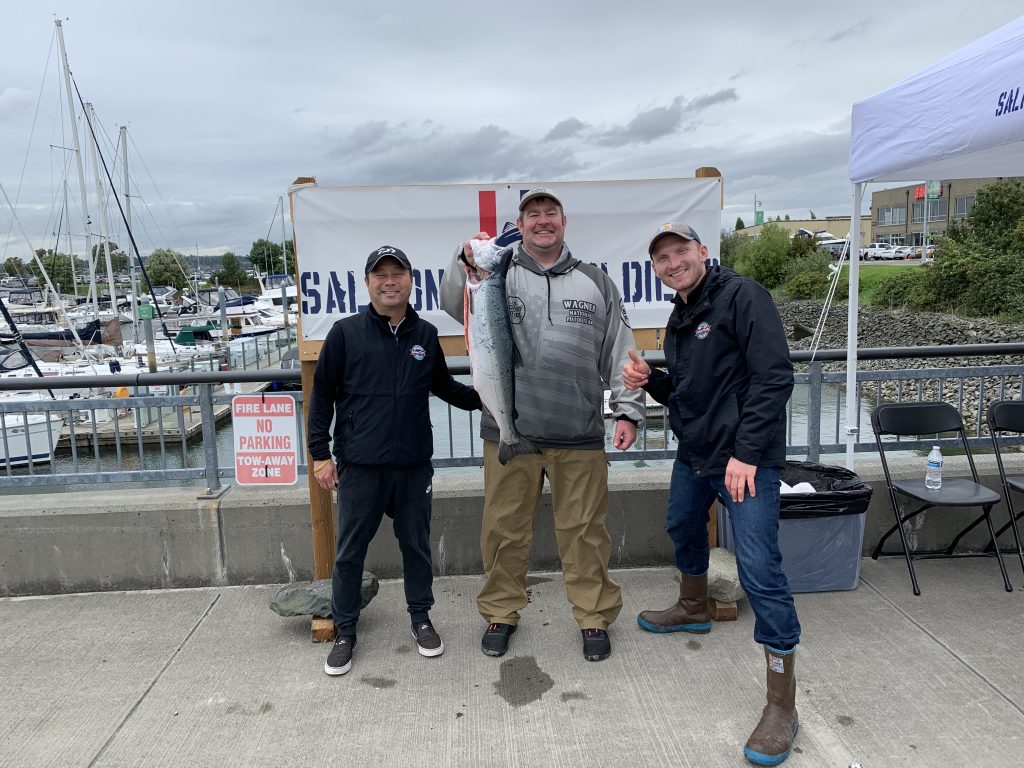A smashing record year for state sport-fishing records including one that could’ve shattered the current record had it been caught in local waters Leave a reply

It has been another smashing year as far as some state fishing records go, and another that would’ve easily topped the current record if it wasn’t for one hang up.
On Aug. 29, Larry Phillips, the Region 6 Washington Department of Fish and Wildlife (WDFW) Director, made the 24-mile run on a glassy ocean from Ilwaco down Tillamook Head in Oregon for a day of bottom-fishing.
“It is a really neat bottom-fish fishery and there is quite a bit of diversity of fish to catch,” Phillips said. “That day while we were targeting lingcod we managed to catch (and release) eight different species of rockfish.”
Phillips was drifting with live anchovies off the Tillamook Head lighthouse in 120 to 140 feet of water targeting lingcod.
The good and bad news is we caught several yellow eye rockfish but were able to get them safely to the bottom by using a fish descender device (ready and in hand when these fish are caught),” Phillips said. “That day we hooked a variety including others like canary, yellowtail, China, tiger, quillback and copper rockfish.”
Since many rockfish are deep dwelling fish they come to the water’s surface with bulging eyes, a bloated belly and a distended stomach and intestine. Barotrauma is physical damage to body tissues caused by changes in air pressure and affects rockfish caught in deep water and brought to the surface. Rapid ascent through the water column expands the gases in the swim bladder.
Anglers without a descending device are faced with watching them struggle on the water’s surface and they end up dying or are consumed by predators or scavengers.
Fish-descender devices don’t require punctures with a hollow-needle tool, but instead attach to the fish’s mouth and take it back down to the depths using a weight. Phillips’ recommends to lower bigger rockfish like a yelloweye with a 10- to 15-pound downrigger ball attached to a downrigger itself.
Phillips points out they usually don’t keep the long-lived, older rockfish and will mainly only keep black rockfish or other more abundant species.
It was one of those healthy rockfish Phillips landed that would’ve broken the current state record had it not been caught in Oregon waters where Oregon Fish and Wildlife doesn’t keep track of marine sport-fishing records.
“When we reeled it in it was an amazing vermilion rockfish and we thought at first it was another yelloweye and rightly so since it was a big one,” Phillips said of the 10.2-pound fish they weighed on a certified scale at the Ilwaco Tuna Club. “We also caught another vermilion that would’ve easily beat the current state record too had it been caught in Washington waters.”
Vermilion rockfish inhabit waters from Baja California north to Alaska at depths of 100 to 500 feet. They’re usually 14 to 22 inches at age six and the largest ever recorded was 30 inches.
The current Washington marine water record for a vermilion rockfish is 7.10 pounds caught by James Duffy at Makah Bay in Clallam County on July 2, 2005.
In 2019, there was also some official state fishing records that were broken or pending.

Another record that may be influx was a potential 90-plus pound bluefin tuna caught in the ocean off Ilwaco on Aug. 12 that was weighed on a certified scale at the Ilwaco Tuna Club.
Phillips says if verified that would shatter the current state record of 39.20 pounds caught by Sam Ellinger on Sept. 28, 2014.
Other verified state records set in 2019 include a channel catfish that weighed 37.70 pounds caught by Cole Abshere at Lake Terrell in Whatcom County on Aug. 20; a sand sole weighing 2.59 pounds caught by Shannon Reiss in the San Juan Islands on March 31; and a largescale sucker that weighed 7.87 pounds caught by Tom Cossalter at Lake Rufus Woods in Okanogan County on Jan. 20.
Coho starting to appear in Puget Sound

Many anglers were starting to get worried that the Puget Sound coho run would be a bust, but it appears their arrival is a tad on the late side and finally came to life this past weekend.
The silver lining now stretches from the western Strait of Juan de Fuca off Sekiu clear into central Puget Sound and in fact some rivers like the Duwamish and Lower Green are finally giving up some coho.
The best marine action is happening from Edmonds Area 9 and 10 boundary south to Meadow Point-West Point area off Shilshole Bay but the southern portion of Area 8-2 – aka the Shipwreck and Browns Bay – normally productive at this time of the year has just been so-so at best.
The Possession Bar to Midchannel Bank off Port Townsend region has also been lackluster although the shore-bound anglers off the west side of Whidbey Island at Bush Point, Lagoon Point and Fort Casey and Point No Point off Kitsap Peninsula have been scoring fair numbers of coho.
This past Saturday more than 125 volunteer boats with 600-plus veterans in the Salmon for Soldier’s event held at the Port of Everett saw fair to good catches of coho despite some blustery weather. The best action was from the Edmonds Marina south to Richmond Beach and there was no hot location and just a steady bite with most fish weighing 3- to 6-pounds and a few hitting the 10- to 12-pound range. Absent are the bigger hook-nosed coho and hopefully they’re enroute.

The largest coho caught in the Salmon for Soldiers event where all veteran anglers are winners was a 9-pound dressed coho caught by Team Northwest Marine Trade Association with Navy Veteran Justin Wagner of Oroville landing the big fish.
Albacore tuna continues to wax the norm with many boats out of Ilwaco and Westport still finding good numbers of fish offshore between the 25 and 35 mile “blue water” line.
With all the rainfall there are now plenty of salmon moving into open rivers around western Washington and the Humptulips was decent. Salmon anglers in the ocean from Neah Bay south to Ilwaco continue to report numerous hatchery coho.

